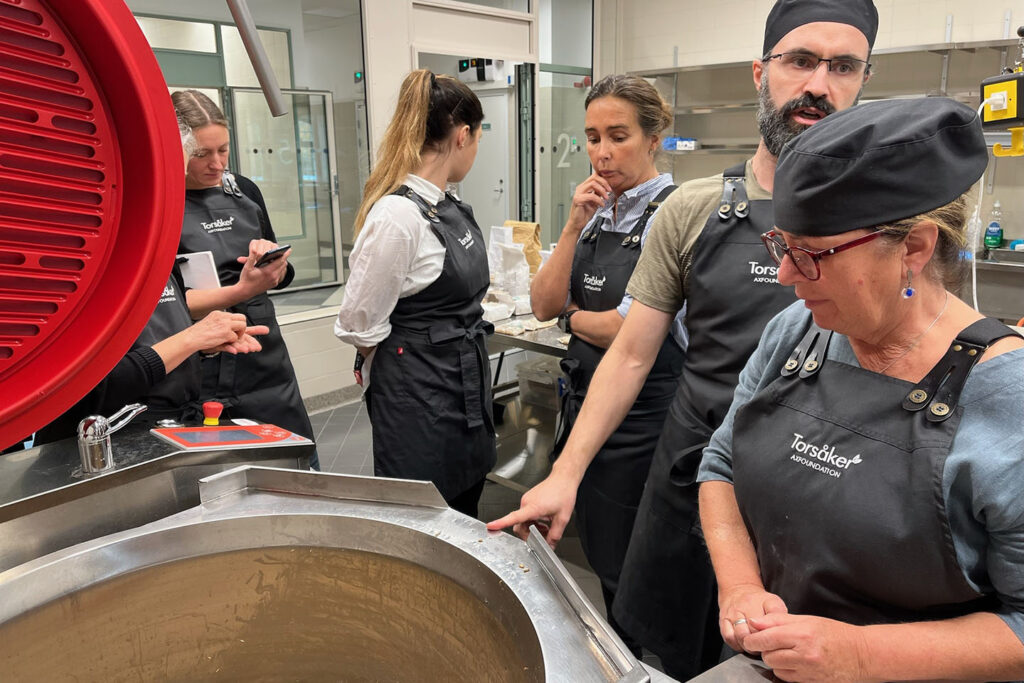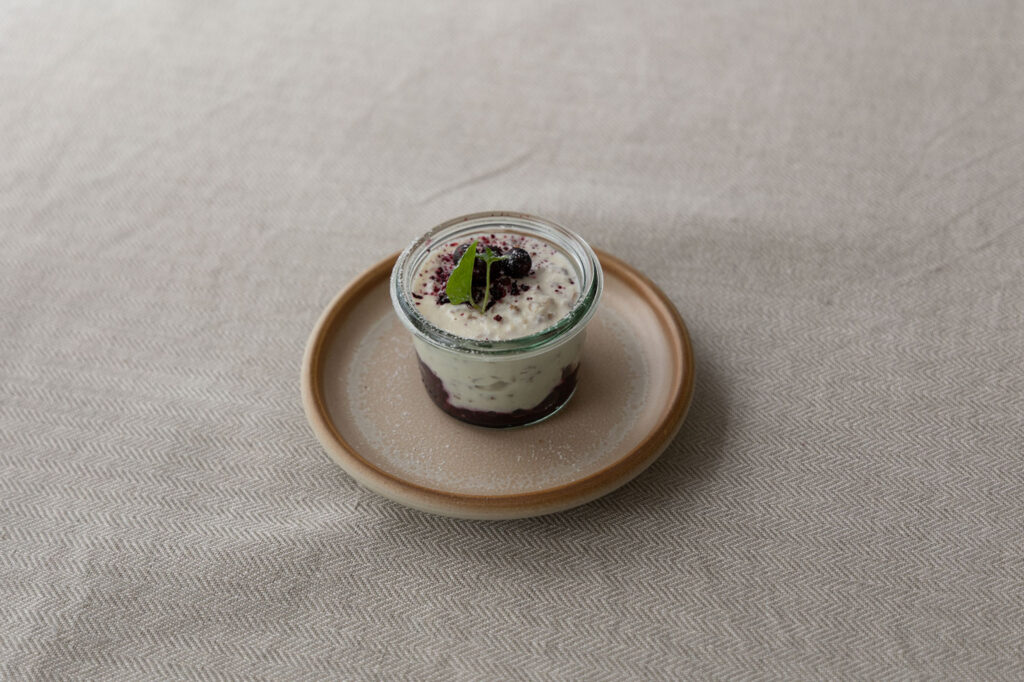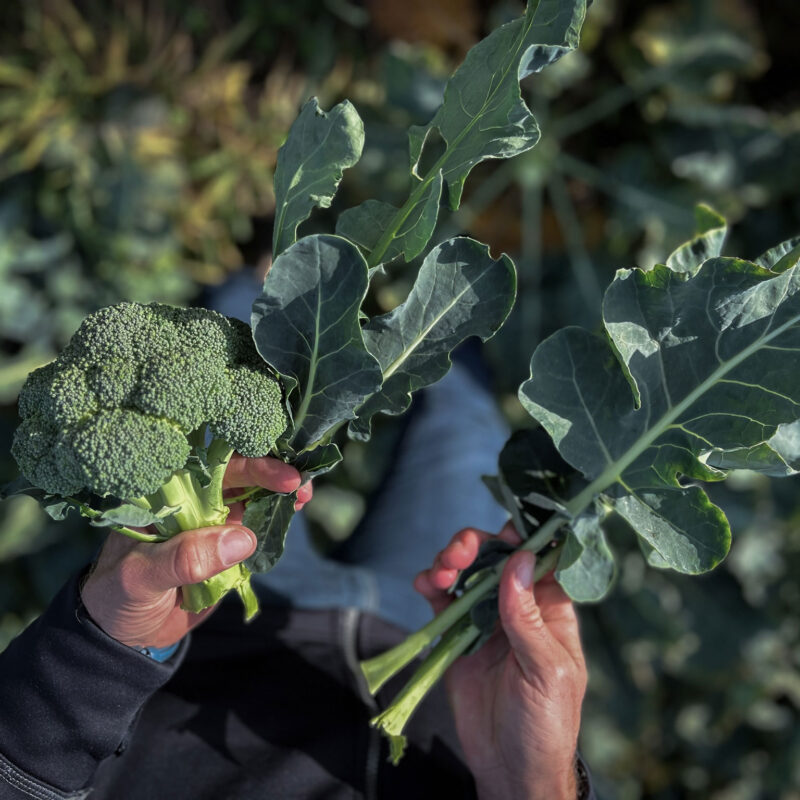The Mineral Shift – How To Increase Bioavailability in Grain Products
Eating more plant-based foods such as whole grains and reducing meat consumption is essential for both health and sustainability. However, minerals like iron and zinc are much more efficiently absorbed from meat than from whole grains. In the Mineral Shift project, a hydrothermal treatment has been optimized to improve mineral bioavailability in grains, allowing our bodies to absorb minerals nearly as efficiently as from meat.

Iron and zinc in grains are difficult to absorb because they are bound to the antinutrient phytic acid.
The Issue
Reducing meat consumption and eating a more plant-based diet with an increased intake of whole grains and legumes is one of the most important changes for a sustainable food system. The risk of plant-based diets having too little protein is considered low. However, several researchers highlight the risk of deficiency in certain minerals, such as iron and zinc. Today, 25-30 percent of girls and young women in Sweden are at risk of iron-deficiency anemia, and vegetarians in Sweden generally have lower iron status.
Meat is a significant source of iron, but the grains we consume actually contain more iron than what’s found in the meat, fish, and eggs consumed. The problem is that iron and zinc in grains like wheat, rye, oats, and barley are difficult for us to absorb because they are bound to the antinutrient phytic acid.
We need to look back in time to move forward. We’re collaborating with a wide range of partners to develop the next generation of whole grain products.
– Veronica Öhrvik, Project Manager, Future Food, Axfoundation

Through hydrothermal treatment up to 99 percent of the antinutrient phytic acid can be broken down and more iron and zinc, becomes available for absorption.
Our Solution
In the Mineral Shift project, a wide range of stakeholders collaborate to develop the next generation of flavorful and healthy whole grain products made from barley, rye, and wheat, where a larger share of minerals becomes available for the body to absorb. At the core of the project is an innovative method developed by the researchers behind the company Hidden in Grains, known as hydrothermal treatment. In simplified terms, this technique involves soaking grains in carefully monitored processes for a specific duration and temperature.

To optimize production, a pilot plant has been established at Torsåker Farm and the next generation of grains products are being developed.
Through hydrothermal treatment of whole grains, up to 99 percent of the antinutrient phytic acid can be degraded. This results in more iron and zinc calcium becoming available to the body. Instead of only a few percent of iron and zinc being available in the untreated ingredient, four times more can become accessible. For instance, this can significantly enhance the absorption of iron in a plant-based meal.

The treatment works for most grains and leaves the grain relatively unchanged.
Hidden in Grains’ treatment technique is inspired by traditional cooking methods used for centuries but has been optimized with modern technology. The treatment works for most grains and leaves the grain relatively unchanged, allowing it to be ground, crushed, or flaked in a regular mill, for example.
The Mineral Shift project focuses on Swedish-grown barley and rye, as well as wheat from heritage grains. An important goal of the project is to increase demand for these grains, both to improve the profitability of Swedish grain producers and processors and to contribute to the national environmental goal of a rich agricultural landscape by increasing diversity.
Did you know…?
- The grain products we consume actually contain more iron than the meat, fish, eggs, and dairy consumed. The problem is that iron and zinc in grains like wheat, rye, oats, and barley are difficult for us to absorb because they are bound to the antinutrient phytic acid.
- Nearly 15 percent of our total food consumption consists of grains. Most commonly, we consume soft bread, pasta, and baked goods.
- 9 out of 10 people in Sweden consume less whole grains than recommended. Whole grains can reduce the risk of type 2 diabetes and cardiovascular disease.
- 25-30 percent of young women in Sweden are estimated to be at risk of iron-deficiency anemia.
- Other factors that affect iron absorption include the body’s need for iron as the primary factor, but also the form in which the iron is found, the presence of other nutrients, and the so-called ‘meat factor’ in meat and fish, which enhances absorption.
- Increasing the amount of plant-based foods also increases the need for zinc, as compounds like phytic acid and tannins can impair zinc absorption.
Our Work
At Torsåker Farm, Axfoundation’s center for the sustainable food systems of the future, Hidden in Grains has established a pilot plant for hydrothermal treatment of grains. The aim is to scale up and optimize production considering profitability and sustainability parameters such as water and energy consumption.
In the test kitchen, Axfoundation is driving the development of new products made from grains treated hydrothermally. Experiments involving new ingredients and dishes are also underway in the Södertälje Municipality’s test bed, with the aim of bringing more sustainable food products to the market. Simultaneously, MatLust development node is working to boost demand for the products and identify suitable producers.
Within the project, Hidden in Grains and Warbro Kvarn are also planning a large-scale production facility. In this endeavor, Axfoundation is sharing experiences related to scaling up and business models from previous successful innovations.
Results
The project has demonstrated that even with large-scale processing of whole grains, up to 99 percent of the antinutrient phytic acid can be degraded. This means that the grain kernel releases its minerals, making up to four times more iron and zinc available for the body to absorb. The project has developed new meals and products using hydrothermally treated barley, rye, and wheat. Hidden in Grains and Warbro kvarn has introduced new whole grain products to the market.
Råggyberry
Together with the meal kit company Middagsfrid, Axfoundation has developed the base recipe for Råggyberry, a snack for the future. The product targets children and has been developed according to the criteria set by Generation Pep for a healthy snack, in collaboration with Dagab, Urban Deli and Middagsfrid.
From crispbread to pancakes and the Nobel Banquet
A range of meals and products have been tested at Torsåker farm, from granola and porridge to pasta, pancakes, crispbread, cookies – with very good results. The pancakes have been served at senior living facilities, among other places, and the hydrothermal grain even made its way to the 2024 Nobel Banquet in the form of Chef Jessie Sommarström’s “woke porridge.”
Barley bulgur
MatLust development has successfully tested Hidden in Grains’ products made from hydrothermally treated grains on schoolchildren in Södertälje. Among the products are bulgur, tabbouleh, and grains as ingredients in meat dishes.

Råggyberry has been developed according to the criteria set by Generation Pep for a healthy snack
Mini Glossary
- Antinutrients are naturally occurring substances in grains, legumes, and nuts. One such substance is phytic acid, which hinders the body’s absorption of minerals. In grains, antinutrients are primarily found in the bran, which also contains most of the grain’s minerals.
- Bioavailability is the proportion of a nutrient that the body can utilize for essential physiological processes.
- Whole grains mean that all parts of the grain kernel are included – it can be whole kernels, crushed/cut kernels, or ground kernels. Common sources of whole grains include crispbread, rye bread, and oatmeal. People who consume a lot of whole grains have a lower risk of developing type 2 diabetes and cardiovascular disease.
- Hydrothermal treatment is a technique that enhances the availability of minerals in grains, such as wheat, through soaking and heating under specific conditions. Hydrothermal treatment techniques have been developed based on proven methods with millennia-old traditions from various parts of the world. The treatment has been studied, including as part of a doctoral thesis at Chalmers University of Technology. Hidden in Grains has improved and validated the technique and quality-assured it through analyses of phytic acid.
Partners
The Mineral Shift project is led by MatLust development node in collaboration with Axfoundation, Hidden in Grains, and Warbro Kvarn. Also, collaborating with the project is The Division of Food and Nutrition Science (FNS) at Chalmers University of Technology.























































